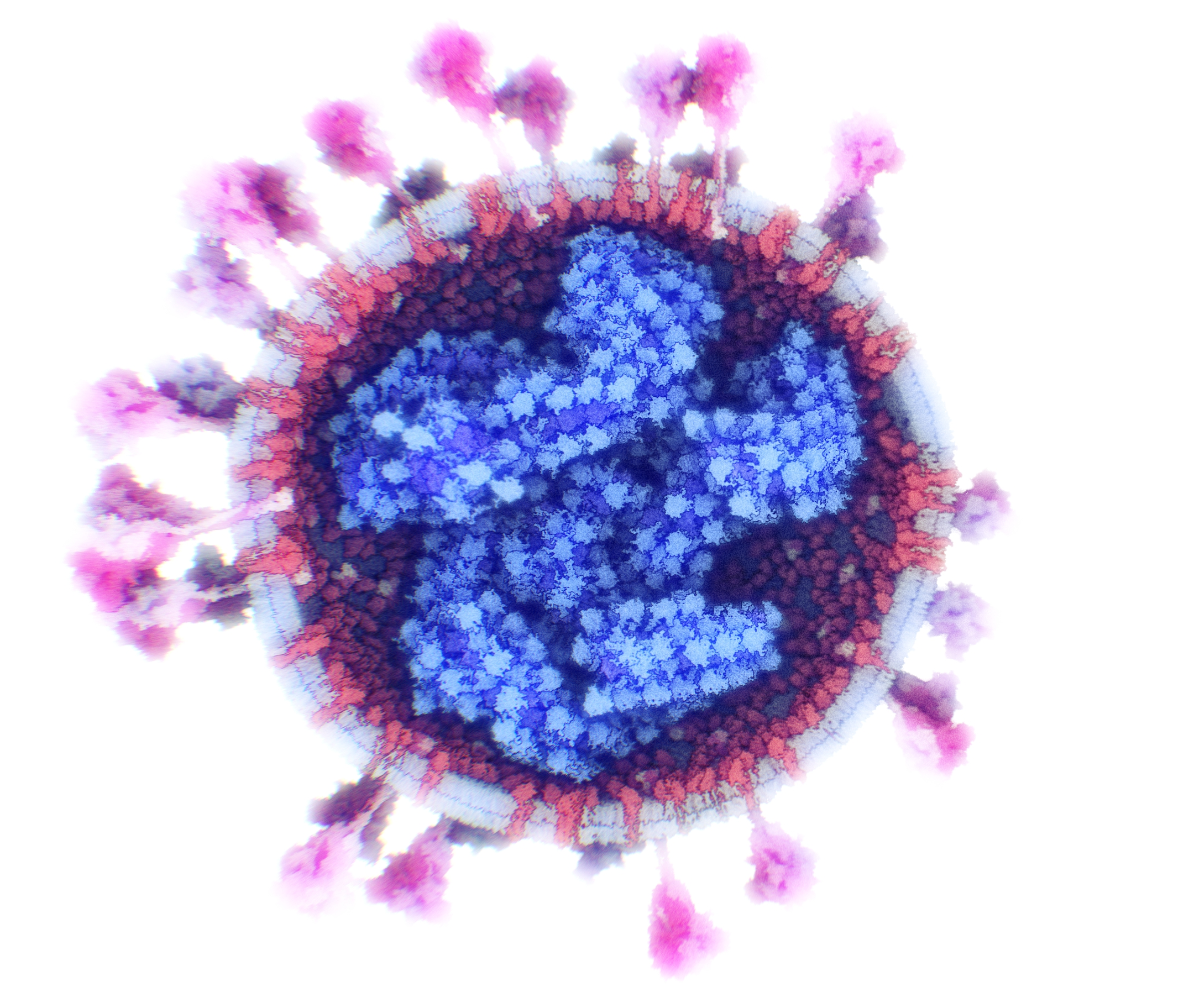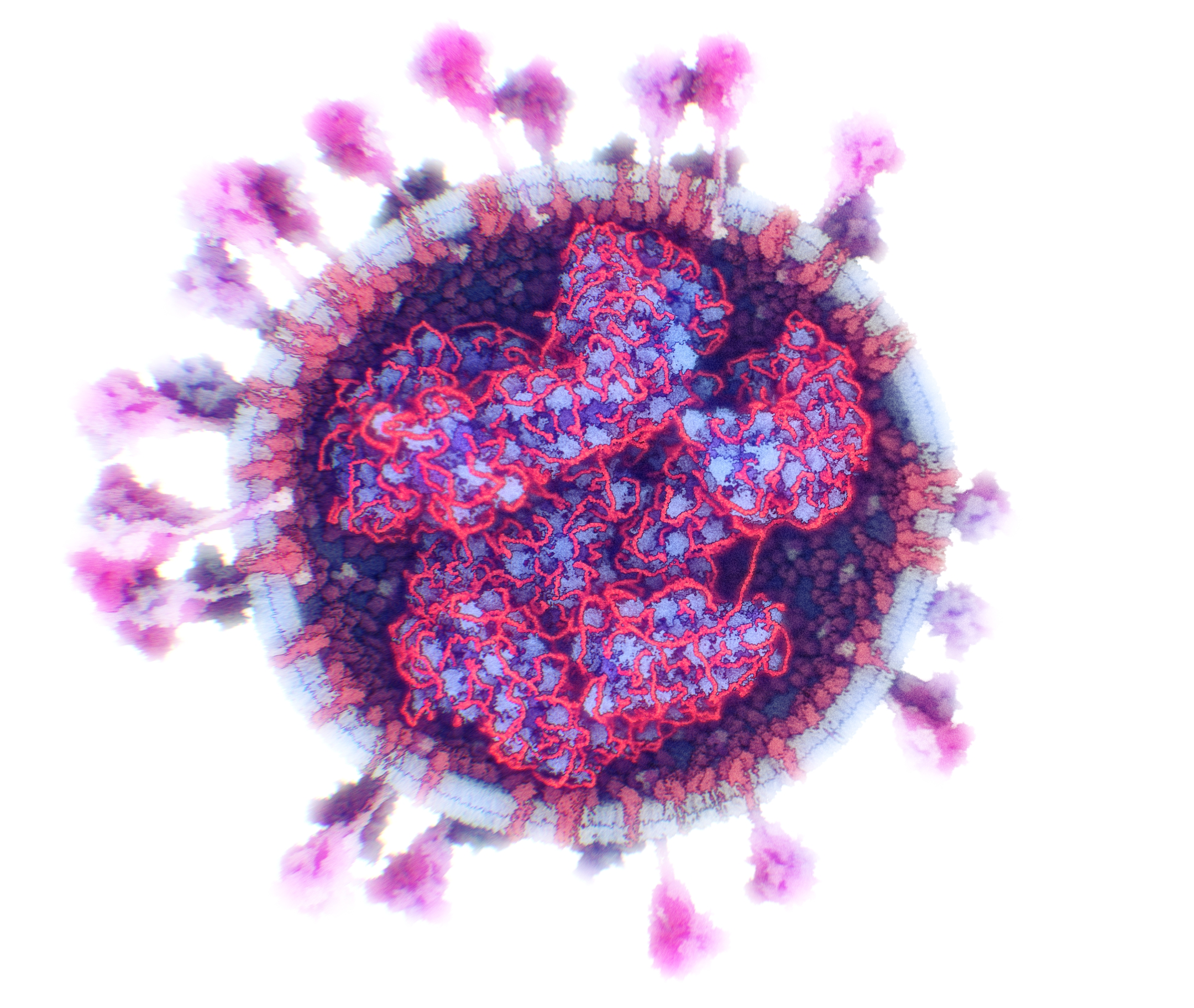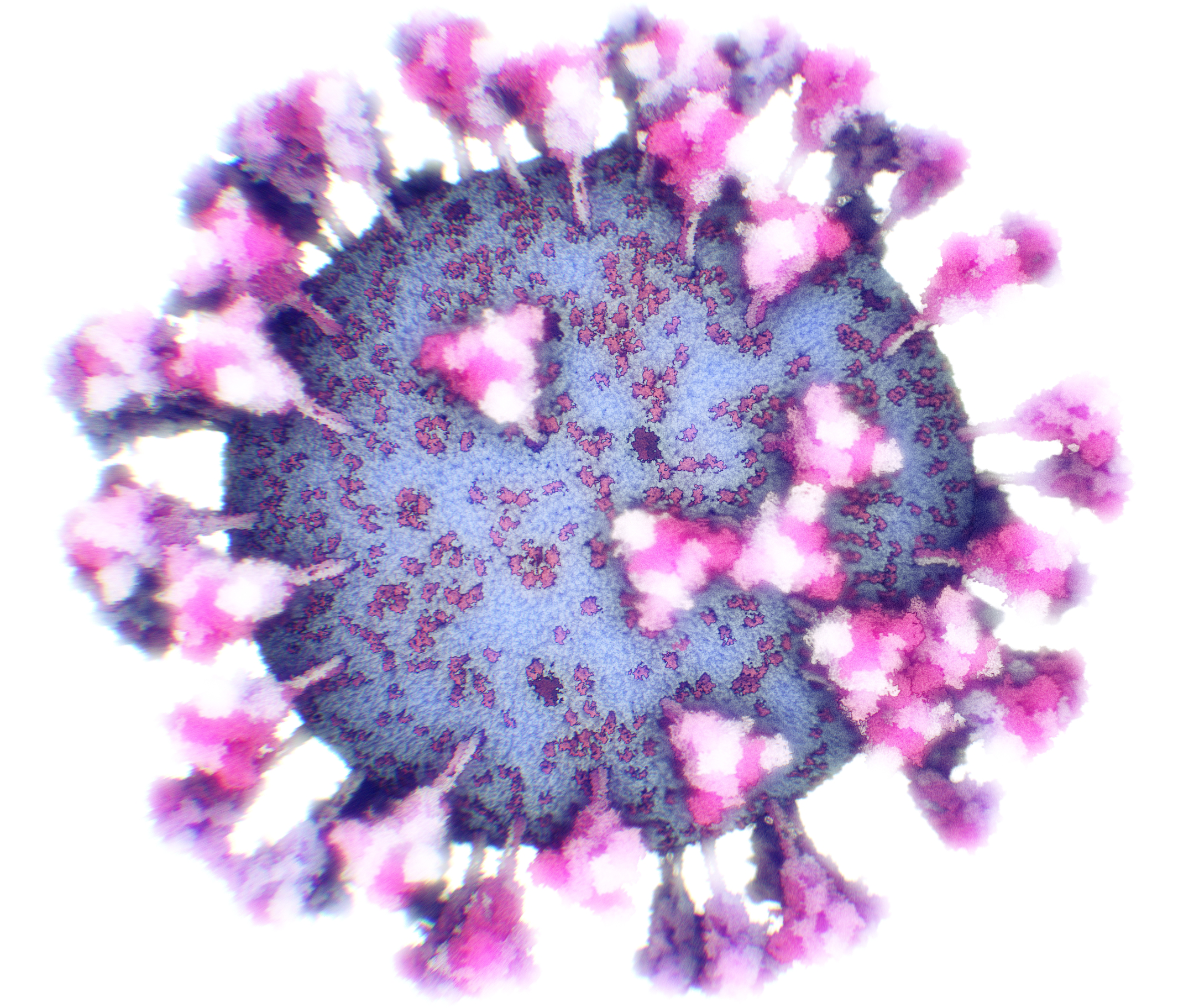Modeling in the Time of COVID-19: Statistical and Rule-based Mesoscale Models

Internal nucleoprotein complex

RNA condensed within the nucleoprotein

Outer spike distribution
Authors
Ngan Nguyen, Ondrej Strnad, Tobias Klein, Deng Luo, Ruwayda Alharbi, Peter Wonka, Martina Maritan, Peter Mindek, Ludovic Autin, David Goodsell, Ivan Viola.
Abstract
We present a new technique for the rapid modeling and construction of scientifically accurate mesoscale biological models. The resulting 3D models are based on a few 2D microscopy scans and the latest knowledge available about the biological entity, represented as a set of geometric relationships. Our new visual-programming technique is based on statistical and rule-based modeling approaches that are rapid to author, fast to construct, and easy to revise. From a few 2D microscopy scans, we determine the statistical properties of various structural aspects, such as the outer membrane shape, the spatial properties, and the distribution characteristics of the macromolecular elements on the membrane. This information is utilized in the construction of the 3D model. Once all the imaging evidence is incorporated into the model, additional information can be incorporated by interactively defining the rules that spatially characterize the rest of the biological entity, such as mutual interactions among macromolecules, and their distances and orientations relative to other structures. These rules are defined through an intuitive 3D interactive visualization as a visual-programming feedback loop. We demonstrate the applicability of our approach on a use case of the modeling procedure of the SARS-CoV-2 virion ultrastructure. This atomistic model, which we present here, can steer biological research to new promising directions in our efforts to fight the spread of the virus.